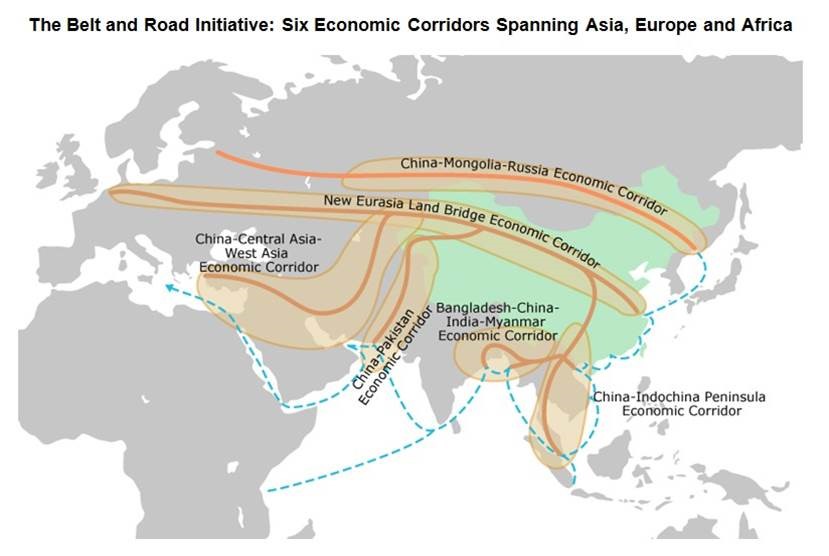What is the issue?
- The second BRI (Belt and Road Initiative) forum recently concluded in Beijing, China.
- With India’s decision to skip the Belt and Road Forum (BRF), here are its outcomes and the takeaways for India.
What were the concerns with BRI?
- The BRI is a giant connectivity initiative by China to revive the ancient Silk Road across Eurasia and Africa.
- Since 2017, India, the U.S. and other countries have raised many concerns over the project.
- They had been critical of the lack of transparency with which many of the BRI projects were negotiated with governments.
- Sri Lanka, the Maldives, and Malaysia had second thoughts on some of the infrastructure projects over fears of a “debt trap”.
- There have also been allegations of corruption in BRI projects.
- The European Union had expressed that the BRI ran counter to their agenda for liberalising trade.
- It said that BRI pushed the balance of power in favour of subsidised Chinese companies.

What are China's commitments now?
- Chinese President Xi’s address to the BRI forum signalled Beijing's acknowledgement of the concerns on the project.
- He made a commitment on “transparency and sustainability” of BRI projects.
- Also, greater debt sustainability in the “financing model” of the Belt and Road under new guiding principles was promised.
- China had agreed to renegotiate terms on projects, reached out to regional organisations like the Arab and African forums and the EU.
- It is hoped that China will build an infrastructure financing network that is equitable and transparent, especially for smaller states.
What are the key takeaways for India?
- Mr. Xi’s words on transparency and inclusivity are welcomed by India.
- But they do not address India's main concern over the BRI, the CPEC.
- India’s objection to the China-Pakistan Economic Corridor (CPEC) is that it runs through parts of Pakistan Occupied Kashmir.
- Citing “sovereignty” concerns, India has, for the second time, not officially participated in the BRF.
- India’s decision to skip the BRF may have led to the exclusion of the BCIM Economic corridor from the list of projects under BRI.
- [The 2800 km BCIM (Bangladesh–China–India–Myanmar) corridor proposes to link Kunming in China’s Yunnan province with Kolkata.
- It passes though nodes such as Mandalay in Myanmar and Dhaka in Bangladesh before heading to Kolkata.]
- Instead, South Asia is covered by three major undertakings listed under the BRI:
- China-Myanmar Economic Corridor (CMEC)
- Nepal-China Trans-Himalayan Multi-dimensional Connectivity Network, including Nepal-China cross-border railway
- China Pakistan Economic Corridor (CPEC)
- However, India has abandoned its sharp rhetoric against the BRI this time compared to 2017.
- China too had issued statements saying it would not allow the decision to affect the bilateral relationship.
- This was an indicator that both would be guided on the issue by the Wuhan (summit) spirit than by the deep differences over the BRI.
Source: The Hindu
